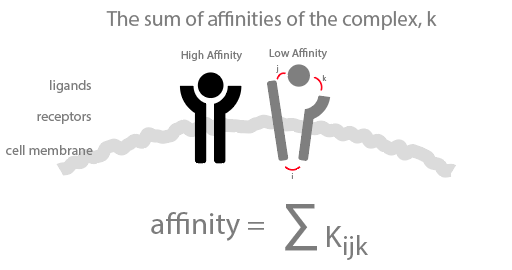we simulate new research in cellular communication by transposing intercellular communication into music.
A Musical Representation
In 2017 our Caltech colleagues identified multiplex molecular communications between cells. They found that the same signals may cause different responses depending on the cell’s type. This research suggests new classes of biotherapies that send discordant signals to cancerous cells without affecting healthy cells nearby.

This three-part system suggests rich tonal blends. Two musicians play each part of the receptor. They play tones five notes apart. The ligands play individual tones in an erratic rhythm that isn’t in time with the receptors. Successful binding is consonant and coordinates the ligand’s rhythm with the receptors.
